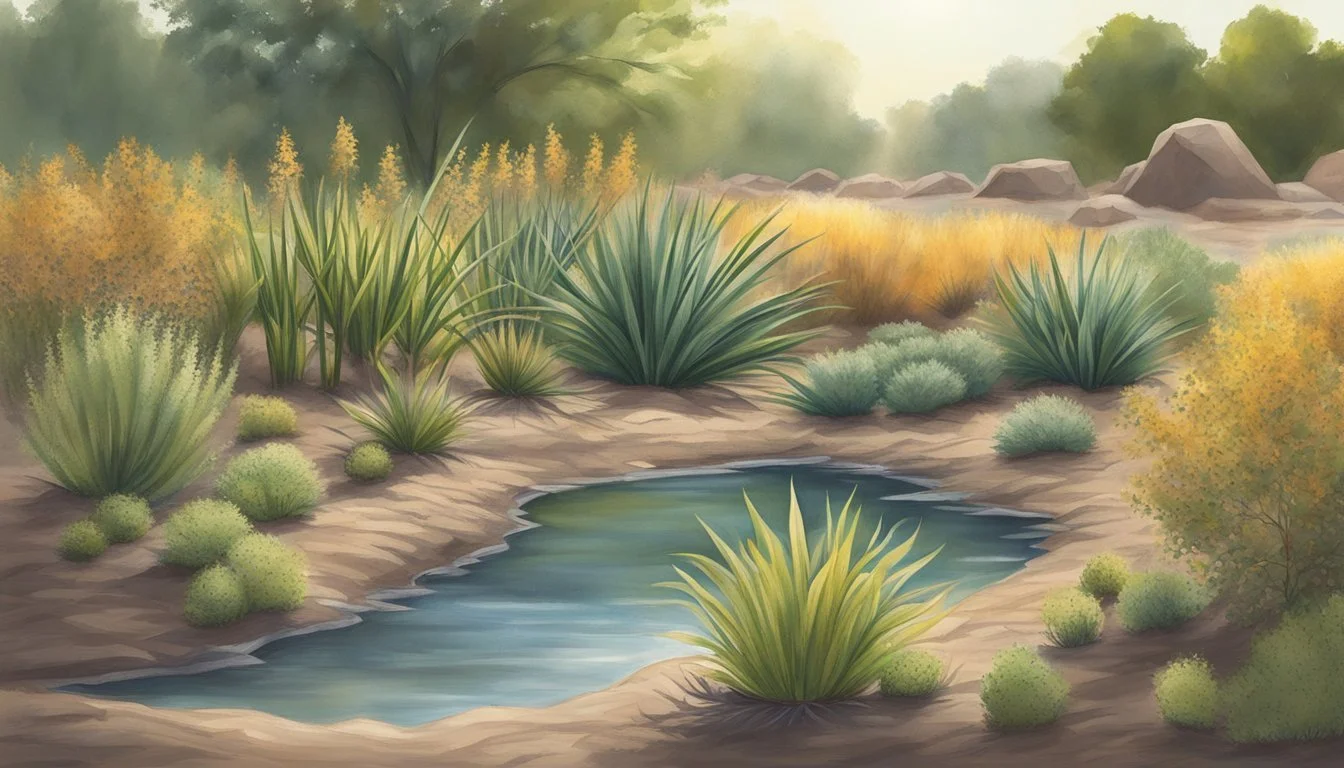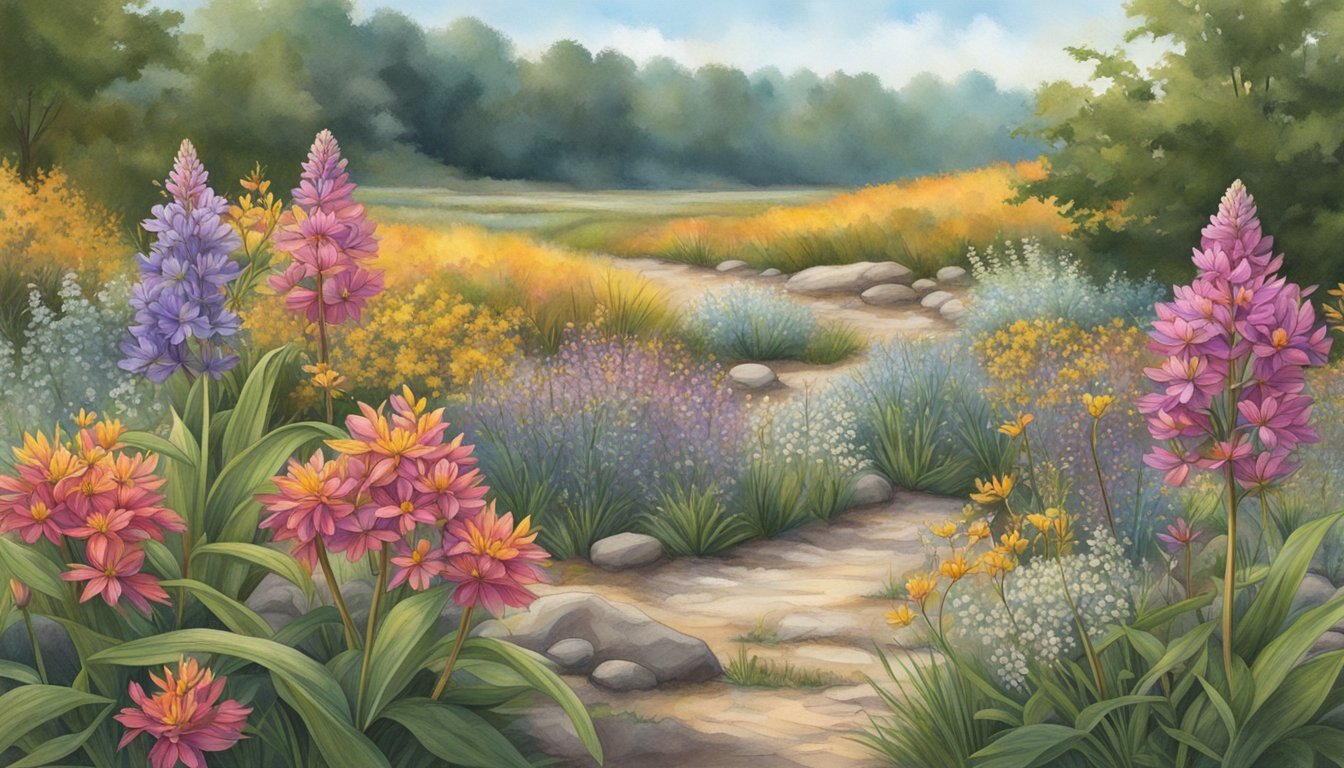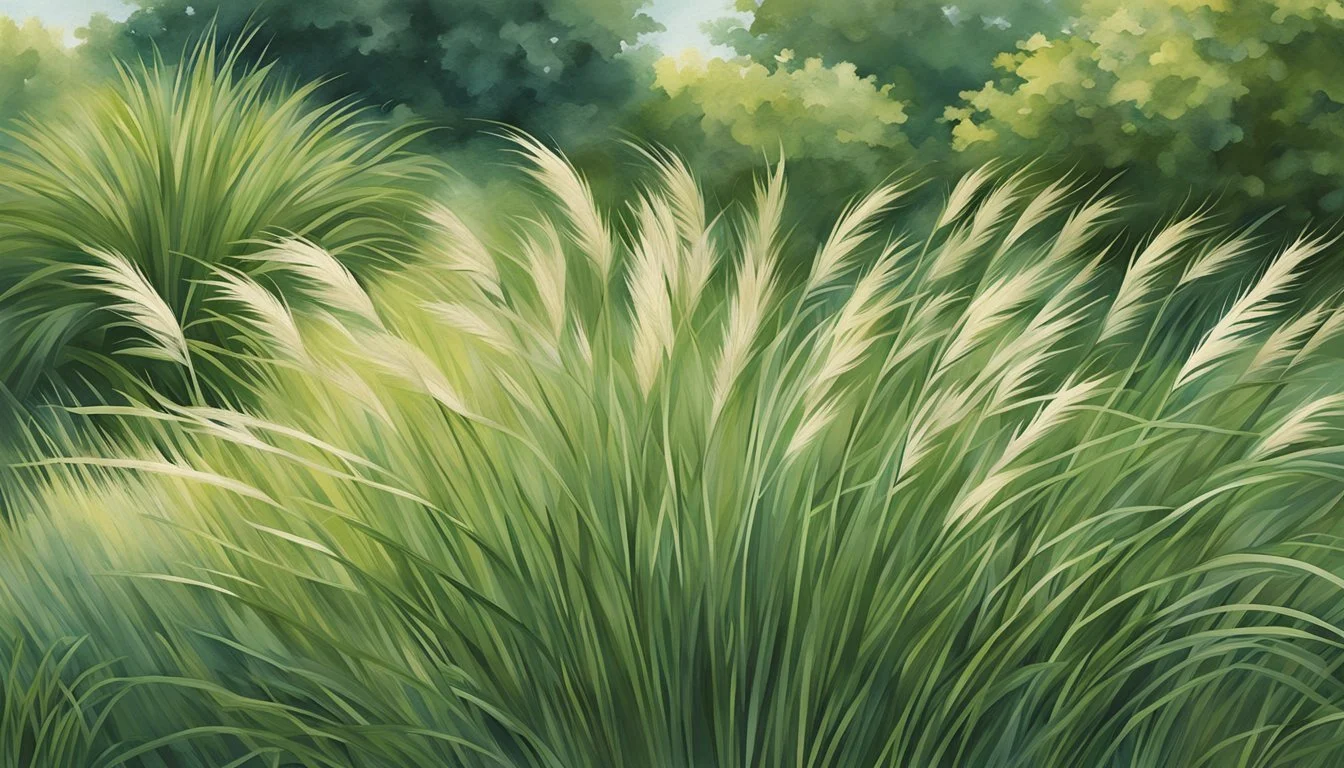Drought-Tolerant Plants in Indiana
Thriving Flora for Dry Climates
Indiana's climate can pose challenges for gardeners and landscapers, with fluctuations that bring about periods of dry weather. As such, incorporating drought-tolerant plants is both a practical and eco-friendly approach to gardening in the state. These hardy species require less water and maintenance once established, making them ideal for creating resilient landscapes. They can also contribute to the local ecosystem by supporting native wildlife and reducing water usage.
Many native plants have adapted to Indiana's variable conditions and can thrive with minimal care. This selection includes a diverse group of flora ranging from flowering perennials to robust shrubs, providing not only environmental benefits but also aesthetic appeal. By choosing plants suited to the local environment, gardeners can enjoy a flourishing garden that withstands the challenges of drought.
Understanding Drought Tolerance
Drought tolerance in plants refers to their ability to withstand dry conditions. In Indiana, certain plants have adapted to thrive with minimal water, making them ideal for low-maintenance landscaping. These drought-tolerant species have developed various physiological adaptations to conserve water, ensuring their survival during periods of minimal rainfall.
Physiological Adaptations:
Root systems: Deep or wide-spreading to access water from larger soil volumes.
Leaf modifications: Smaller leaves or a waxy coating to reduce water loss.
Strategic Water Use:
Stomatal control: Plants can close their stomata to prevent water loss.
Osmolyte production: Compounds that help maintain cell hydration and enzyme function.
Irrigation considerations for these plants are significantly different from those of non-drought-resistant species. They require less frequent watering, which conserves water and reduces the need for active soil moisture management. This trait makes them well-suited to Indiana's climate, where water resources can be scarce during certain times of the year.
The implementation of drought-tolerant landscaping aligns with environmentally sustainable practices by reducing dependency on water resources. Incorporating these plants in gardens or public spaces contributes to water conservation efforts and promotes biodiversity.
Beneficial Traits for Gardeners:
Water conservation: Reduced need for frequent watering.
Low maintenance: Fewer resources required for upkeep.
Hardiness: Resilience to local climatic conditions.
Understanding and utilizing drought-tolerant plants is key for anyone looking to create a resilient garden or landscape in Indiana, where weather can be unpredictable and sometimes harsh.
Key Characteristics of Drought-Tolerant Plants
Drought-tolerant plants often exhibit a series of adaptations that allow them to thrive in conditions with limited water supply. These key characteristics maximize their efficiency in using available moisture and maintaining their physiological processes during periods of drought.
Foliage: Plants suited for arid conditions may have small or narrow leaves, often with a waxy or hairy surface to reduce water loss. The color of the foliage can also play a role, with many drought-tolerant species sporting a gray or silver tint that reflects sunlight, thereby minimizing transpiration.
Sun Exposure: Drought-tolerant plants typically flourish under full sun. They are well-adapted to harness sunlight efficiently, allowing them to photosynthesize effectively despite water scarcity. However, some can tolerate partial shade, although they may exhibit slower growth in reduced light conditions.
Moisture Levels: These plants are masters at conserving moisture. They often have deep or extensive root systems that can tap into soil moisture well below the surface. Some species can also store water in their leaves, stems, or roots, which contributes to their resilience during dry spells.
Well-Drained Soil: Ideal soil conditions for drought-resistant plants are those that are well-drained. Such soils prevent water from pooling around the roots, which could lead to rot or disease. Instead, these plants prefer soils that retain enough moisture to sustain them while allowing excess water to drain away efficiently.
By integrating these attributes, drought-tolerant plants maintain vital functions and can survive in environments that would challenge less adapted species. Gardeners and landscapers in Indiana can rely on these hardy plants to create sustainable and resilient green spaces.
Popular Drought-Tolerant Trees and Shrubs
In Indiana, incorporating drought-tolerant trees and shrubs into landscaping is a smart choice for sustainable garden design. These species offer resilience against dry spells, support local wildlife, and can add visual interest to gardens.
Grey Dogwood
Grey Dogwood (Cornus racemosa) is a native shrub that stands out for its ability to endure dry conditions once established. It features white spring blossoms followed by white berries in late summer, which are a favorite of birds. The Grey Dogwood is an excellent choice for naturalizing areas or adding a backdrop to garden beds.
Black Chokeberry
Black Chokeberry (Aronia melanocarpa) is a durable shrub revered for its adaptability to a range of soil types, including dry soils. This shrub offers multi-season interest with its white flowers in spring, glossy dark berries in late summer, and vibrant red foliage in fall. The berries not only add visual appeal but also provide a valuable food source for birds, contributing positively to the local ecosystem.
Fragrant Sumac
For gardeners seeking a low-growing shrub with exceptional drought tolerance, Fragrant Sumac (Rhus aromatica) is an attractive choice. This small to medium-sized shrub boasts aromatic foliage, which turns a fiery orange to red color in autumn. Its dense and spreading habit makes it useful for erosion control and as ground cover in larger areas of the landscape.
Native Perennials for Resistance and Beauty
Choosing native perennials for your Indiana garden can offer both resilience to drought and a beautiful display of colors. These plants are adept at surviving the region's climate while providing essential habitat for local wildlife, such as hummingbirds and butterflies. With careful selection, gardeners can enjoy a vibrant garden that is both deer-resistant and attractive to pollinators.
Purple Coneflower
Echinacea purpurea, commonly known as the Purple Coneflower, stands out with its bold purple petals and prominent, spiky central cone. This perennial is not just about looks; it's a favorite among pollinators and can add a splash of color to the drought-tolerant garden. Its hardiness makes it an excellent choice for gardeners seeking low-maintenance plants that support butterfly populations.
Black-Eyed Susan
Rudbeckia hirta, or Black-Eyed Susan, shines with its gold to bright yellow flowers, each sporting a signature dark brown center. Ideal for adding contrast and colors, these flowers are not only visually appealing but also attract various pollinators. They thrive in a range of conditions, from full sun to partial shade, and their adaptability makes them an excellent addition to a resilient garden.
Butterfly Attracting Plants
A well-planned garden with natives such as Purple Coneflower and Black-Eyed Susan can become a haven for butterflies. Include plants like Monarda fistulosa, which is known for its appealing colors and fragrant foliage. This perennial invites a flutter of activity from butterflies, enhancing the dynamic beauty of your garden. These plants typically flourish in full sun and provide essential nectar sources for pollinators.
Herbaceous Plants for Ground Cover
For ground cover, consider drought-tolerant herbaceous plants that add texture and color without requiring excessive care. Options like Sedum (Stonecrop), Thyme, and Sempervivum tectorum (Hens and Chicks) offer low-growing, spreading foliage that is both visually striking and supportive of local ecosystems. These hardy plants resist deer and demand minimal watering, making them fitting choices for a resilient landscape.
Enhancing Gardens with Ornamental Grasses
Incorporating ornamental grasses into Indiana gardens offers both aesthetic appeal and practical benefits. These grasses are resilient, require minimal maintenance, and provide a stunning array of textures and colors throughout the seasons.
Switchgrass
Panicum virgatum, commonly known as Switchgrass, is a native prairie plant that stands out in landscaping due to its hardiness and adaptability. It thrives in zones 4 through 9, making it a great choice for Indiana gardens. With its towering height of up to 6 feet and a preference for full sun, Switchgrass creates dynamic vertical accents. Here's a quick glance at its characteristics:
Height: Up to 6 feet
Sunlight: Full sun preferred
Soil preference: Tolerant to a range of soils
Zones: Hardy in 4-9
Switchgrass also offers stunning fall colors, transitioning from a blue-green in summer to golden hues in autumn. View more about Switchgrass and its growing conditions.
Amsonia
Amsonia, also known as Blue Star, adds a distinct texture to garden beds with its fine, feathery foliage. This perennial is notable for its durability and the charming blue flowers it produces in spring. When considering Amsonia for a garden, it's essential to recognize:
Height: 2-3 feet
Sunlight: Full sun to partial shade
Soil preference: Well-drained soil
Blooming: Star-shaped blue flowers in spring
In addition to its visual appeal, Amsonia also turns a brilliant yellow in the fall, contributing further color to the garden. Discover the appeal of Amsonia in garden design.
Prairie Dropseed
Sporobolus heterolepis, or Prairie Dropseed, is a fine-textured grass that forms elegant, arching foliage, ideal for softening hard lines in landscapes. This low-maintenance grass is perfect for creating sweeping drifts or as an accent specimen. Characteristics include:
Height: 2-3 feet
Sunlight: Full sun
Soil preference: Well-drained, prefers drier conditions
Attribute: Fragrant flowers in late summer
Beyond its visual beauty, Prairie Dropseed is valued for its drought tolerance and ability to thrive in poor soils, representing the essence of sustainable gardening. Learn more about Prairie Dropseed's landscaping uses.
Creating Sustainable Landscapes
Creating sustainable landscapes in Indiana involves strategic garden design that supports the local ecosystem, conserves water, and utilizes native Indiana plants. A sustainable garden design is not only about aesthetics but also about fostering a healthy relationship with the natural environment.
Garden Design: Thoughtful layout contributes to water efficiency and plant health. One should incorporate drought-resistant native plants that are well-adapted to Indiana’s climate. This includes species that can thrive in poor soil conditions and are tolerant of the local weather patterns.
Native Indiana Plants: These plants have evolved over millennia to survive in the local conditions, making them a smart choice for reducing water usage and maintenance needs. For example, landscaping with native plants like the Butterfly Milkweed or the Blue Wild Indigo can enhance the local ecosystem by providing habitat and food sources for pollinators.
Ecosystem: Integrating native fauna into garden spaces invites beneficial insects and birds, which aid in pest control and pollination. It also provides them a habitat, contributing to biodiversity.
Organic Matter and Mulch: Applying organic matter improves soil fertility and structure. Mulch, on the other hand, is essential for retaining soil moisture, regulating soil temperature, and suppressing weed growth. Together, they reduce the need for chemical fertilizers and excessive irrigation.
Creating a sustainable landscape in Indiana is not only about plant selection but also optimizing the natural resources to their fullest potential. It’s a beneficial cycle where gardeners support the ecosystem, and in turn, the ecosystem supports the garden.
Maintaining Drought-Tolerant Gardens
Creating a drought-tolerant garden in Indiana means selecting plants that can thrive in the summer heat and periods of dry weather without requiring extensive irrigation. These gardens can be quite low maintenance, but some care is vital to ensure their success.
To maintain a healthy balance in your garden, focus on proper soil preparation. This involves integrating ample organic matter to create fertile soil. It is essential for improved water retention and drainage, ensuring plants have access to moisture during dry spells.
Regular weeding keeps competition for resources at bay. Drought-tolerant plants generally require less water and fewer nutrients, but weeds can quickly sap these limited resources if left unchecked.
Although typically more resistant to disease and pests, vigilance is still key. They should be checked periodically for signs of infestation or illness, which, if caught early, can often be managed without resorting to harsh chemical treatments. Instead, gardeners can opt for organic or natural pest control methods.
Here's a quick guide on caring for a drought-tolerant garden:
Watering: Deep, infrequent watering encourages deep root growth, which can access moisture even from dry soil.
Task
Watering
Weeding
Checking for pests/disease
Frequency
Once a week or less
Bi-weekly
Monthly
In gardening, less can often be more. Ensuring that the chosen plants are suited to Indiana's climate will facilitate a garden that grows with minimal intervention, thriving in the region's natural conditions and providing a sustainable and beautiful landscape. Remember, while drought-tolerant gardens may be designed to survive with little water, they do benefit from an occasional thorough soaking, especially during extended droughts.
Frequently Asked Questions
Choosing the right plants for your garden is essential, particularly when considering climatic challenges such as dry conditions. This section addresses common inquiries about drought-tolerant plants suitable for Indiana's landscape, providing insights into making the most out of your gardening even during water-scarce periods.
What are some low maintenance native plants for Indiana landscapes?
Indiana landscapes benefit greatly from incorporating native plants such as Grey Dogwood and Black Chokeberry, which require minimal upkeep and thrive in the local environment.
Which perennials are best suited for drought conditions in Indiana?
Perennials like Autumn Sage and Baby Sage are exceptionally drought-tolerant and apt choices for Indiana gardens facing dry conditions, adapting well to the local climate.
Where can one find nurseries selling drought-resistant Indiana native plants?
Local nurseries often specialize in region-specific flora. Indiana Native Plants and Pollinator’s Nursery is an excellent starting point for finding drought-resistant native plants.
What are the recommended evergreen plants for dry conditions in Indiana?
Eastern White Pine stands out as an evergreen plant that can endure dry conditions in Indiana, providing year-round greenery with less water.
Can you list drought-tolerant flowering plants that thrive in Indiana's climate?
Among flowering plants, the Autumn sage is known for both its vibrant blooms and ability to withstand prolonged dry periods in Indiana.
How should I landscape my garden in Indiana to withstand drought periods?
Landscaping for drought involves choosing plants with deep root systems that maximize water use, such as those listed in the Indiana Native Plant and Seed Directory, and implementing water-wise garden designs.








